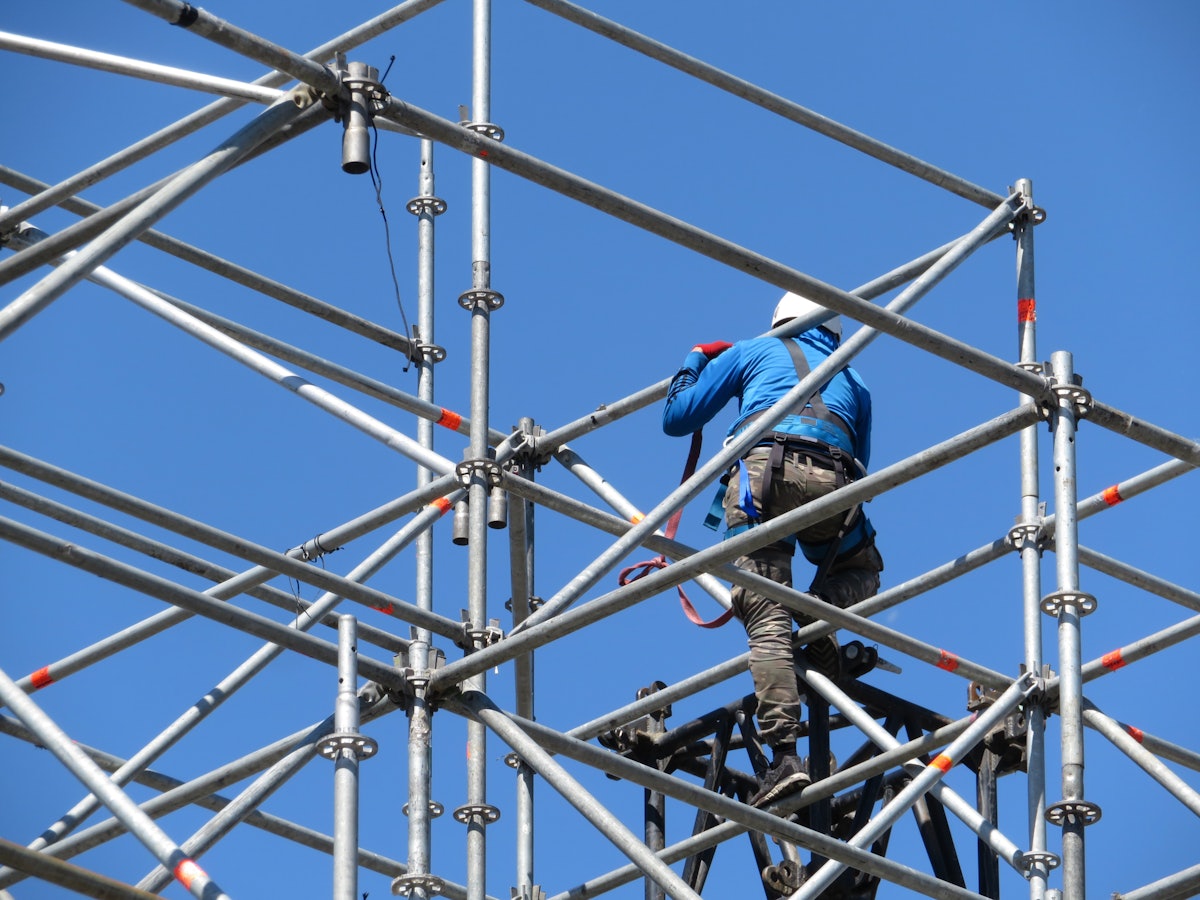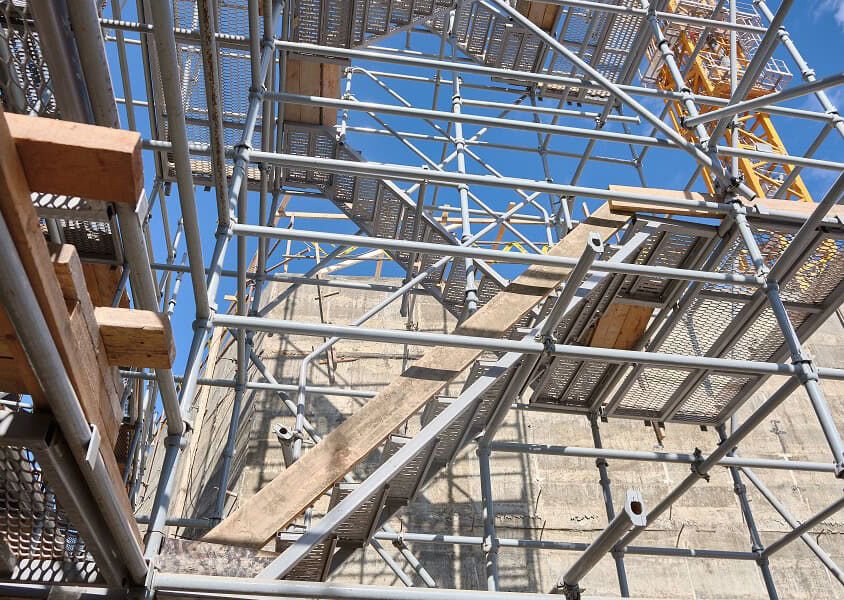Discover Leading Scaffolding Near Me for Your Home or Business Needs
Checking Out the Different Kinds Of Scaffolding Made Use Of in Construction Tasks
The building and construction sector depends greatly on various types of scaffolding to meet details project demands, each offering distinct advantages and applications. Conventional framework scaffolding offers a tough structure for basic tasks, while suspended scaffolding is important for work on high-rise frameworks.

Typical Framework Scaffolding
Conventional frame scaffolding is just one of one of the most commonly utilized approaches in the construction industry as a result of its toughness and adaptability. This system includes vertical and straight frames that are assembled to produce a stable system for materials and employees. The primary components consist of vertical blog posts, horizontal ledgers, and angled braces, which together give a strong framework that can support significant lots.
One of the key advantages of conventional structure scaffolding is its versatility to numerous construction jobs, ranging from household buildings to large industrial frameworks. The modular style enables simple setting up and disassembly, making it reliable for both long-lasting and short-term tasks. Additionally, the system can be customized in height and width, suiting different building styles and site conditions.
Safety and security is paramount in scaffolding applications, and traditional frame systems are geared up with guardrails and toe boards to avoid falls and guarantee worker security. Furthermore, regular inspections and adherence to safety guidelines are critical in keeping the honesty of the scaffold. On the whole, standard structure scaffolding continues to be a fundamental selection in the building and construction sector, providing a reputable platform for labor and enhancing general job effectiveness

Suspended Scaffolding
Put on hold scaffolding supplies a special service for building and construction projects that call for accessibility to raised surfaces, specifically in scenarios where typical structure scaffolding might be unwise. This kind of scaffolding is commonly suspended from the roofing or upper degrees of a structure, using a system of ropes, pulleys, and platforms to develop a working area that can be readjusted to numerous heights.
Among the key advantages of suspended scaffolding is its adaptability. It can be easily repositioned or reduced to suit adjustments in building requirements, making it ideal for tasks such as home window installation, façade job, and upkeep on skyscrapers. Additionally, the very little footprint of put on hold scaffolding allows for better use ground space in metropolitan settings, where room is often limited.
Security is an important consideration in the use of put on hold scaffolding. In general, put on hold scaffolding supplies a effective and efficient solution for accessing hard-to-reach locations in various building scenarios, boosting both efficiency and safety on website.
System Scaffolding
System scaffolding, typically considered a modern-day remedy in the scaffolding sector, contains pre-engineered parts that can be swiftly assembled and adjusted for different construction jobs. Scaffolding. This type of scaffolding is characterized by its modular layout, which enables for versatility and performance on job websites, accommodating structural needs and different heights
Typically made from high-strength steel or light weight aluminum, system scaffolding offers improved toughness and security. The parts include upright blog posts, straight journals, and diagonal braces, which interconnect firmly, ensuring a robust structure. The layout commonly incorporates standardized fittings, streamlining setting up and disassembly processes, consequently lowering labor time and expenses.

Rolling Scaffolding
Rolling scaffolding is a flexible option to conventional set scaffolding, created for mobility and convenience of use on construction websites. This type of scaffolding includes a system sustained by frames with wheels, allowing employees to easily transfer it as needed. The movement feature significantly boosts efficiency, as it decreases downtime connected with taking apart and setting up taken care of scaffolding.
Generally created from lightweight products such as light weight aluminum or steel, rolling scaffolding provides a tough yet portable option for projects calling for frequent repositioning - Scaffolding. It is especially advantageous in jobs such as paint, drywall installation, and electrical job, where accessibility to numerous heights and areas is necessary
Security is paramount in rolling scaffolding layout, with features such as locking wheels to avoid unintentional motion when in operation, and guardrails to safeguard workers from falls. In addition, lots of versions are flexible in height, fitting various project requirements.
Cantilever Scaffolding

The style of cantilever scaffolding normally includes using braces or arms anchored scaffolder hiring abroad 2021 to a structure or framework, enabling the system to extend outside safely. Safety and security is vital; thus, these scaffolds have to be crafted to stand up to various lots and environmental problems. Routine inspection and upkeep are necessary to ensure architectural honesty and employee safety and security.
Cantilever scaffolding is favored for its convenience and effective usage of room, making it a popular option in city environments where room restrictions are usual. Furthermore, it promotes much easier access to high altitudes, ultimately contributing to the total efficiency of building and construction projects. As with all scaffolding scaffolder duties kinds, appropriate training and adherence to safety and security requirements are essential for workers utilizing cantilever scaffolding.
Final Thought
Conventional framework scaffolding gives security, while suspended scaffolding provides versatility for raised jobs. System scaffolding helps with fast setting up, and rolling scaffolding improves movement for differing job settings.
Standard frame scaffolding offers a strong foundation for basic jobs, while suspended scaffolding is important for work on skyscraper structures.Moving scaffolding is a functional choice to standard fixed scaffolding, made for wheelchair and simplicity of use on building and construction sites. As with all scaffolding kinds, appropriate training and adherence to security standards are essential for workers making use of cantilever scaffolding.
Typical frame scaffolding provides stability, while suspended scaffolding supplies convenience for elevated jobs. System scaffolding helps with fast assembly, and rolling scaffolding boosts wheelchair for differing description work settings.